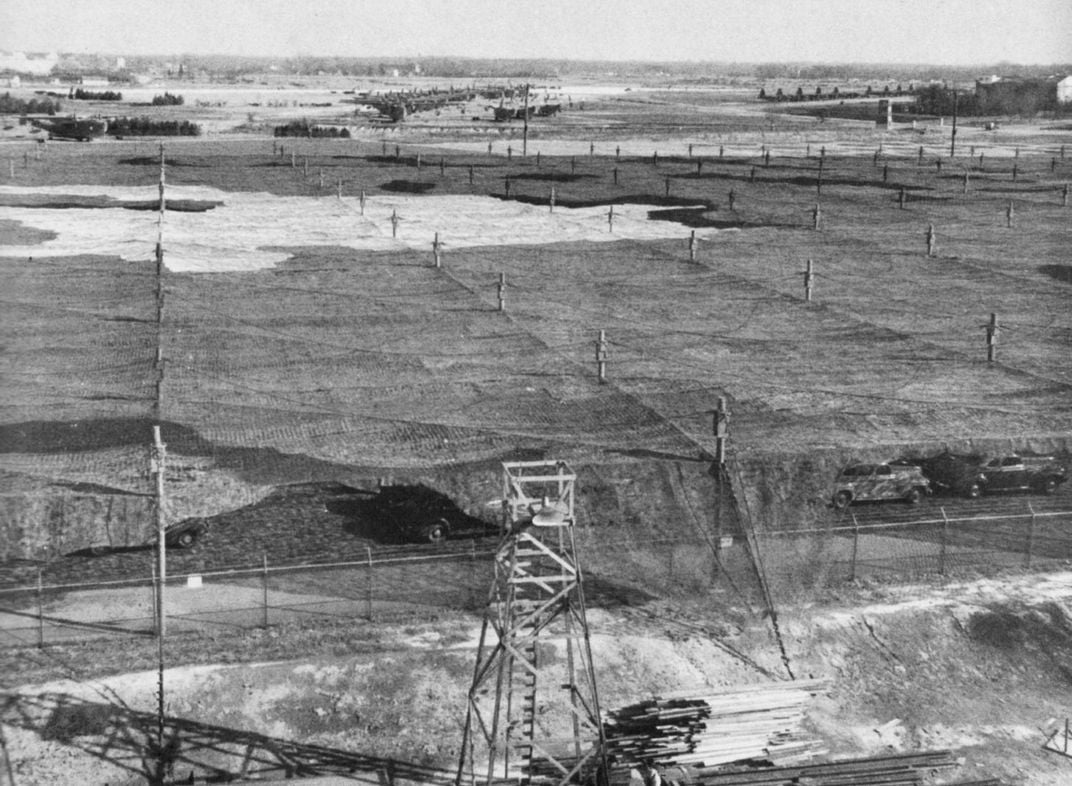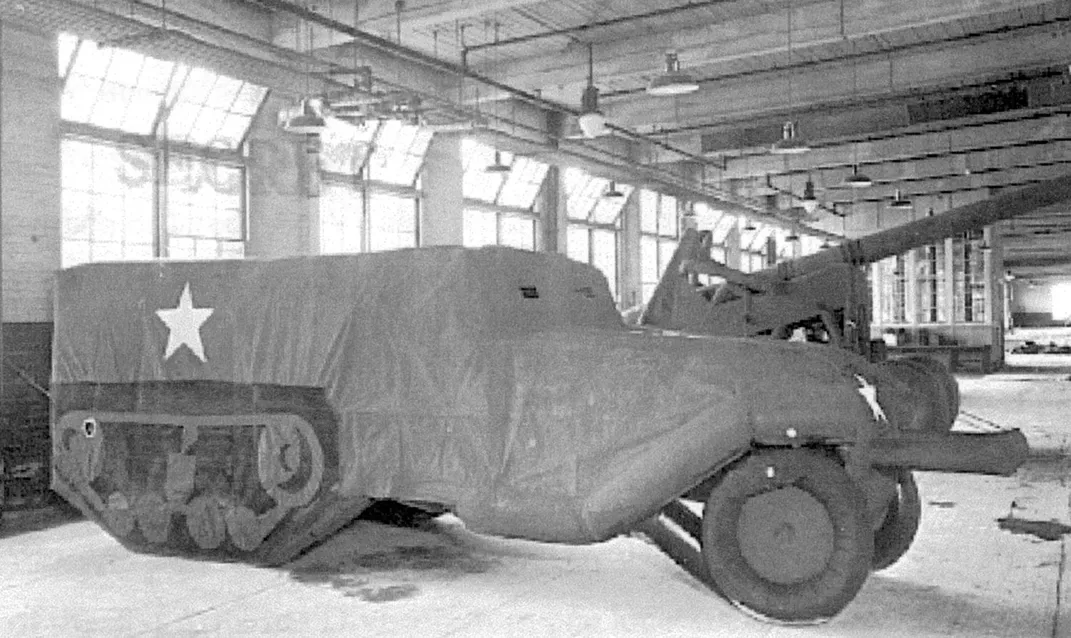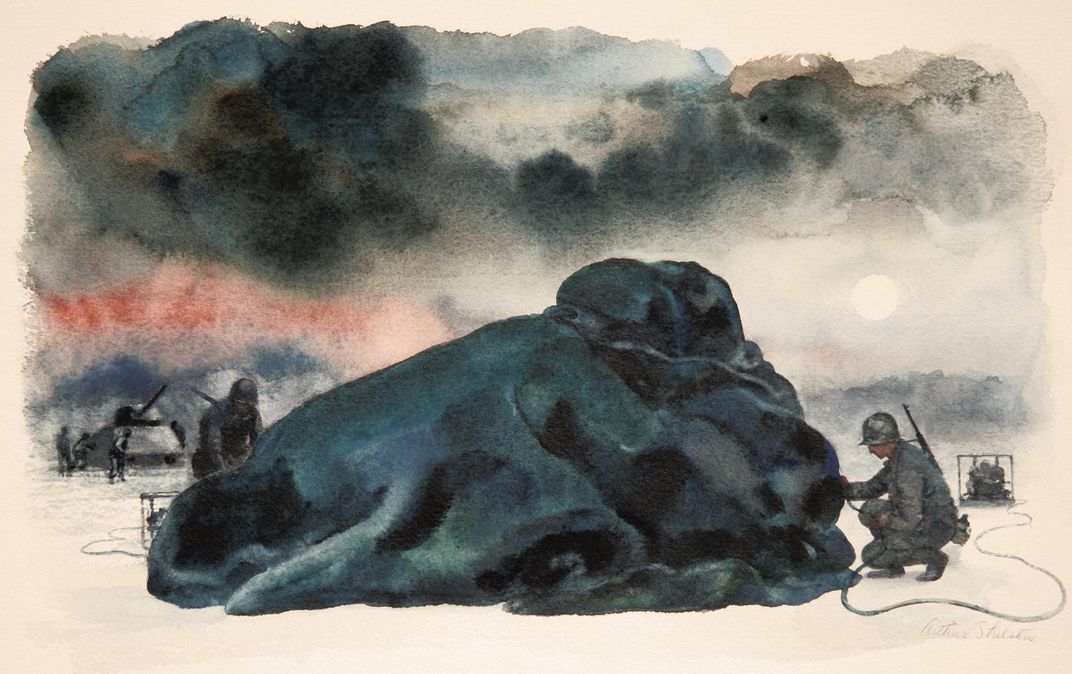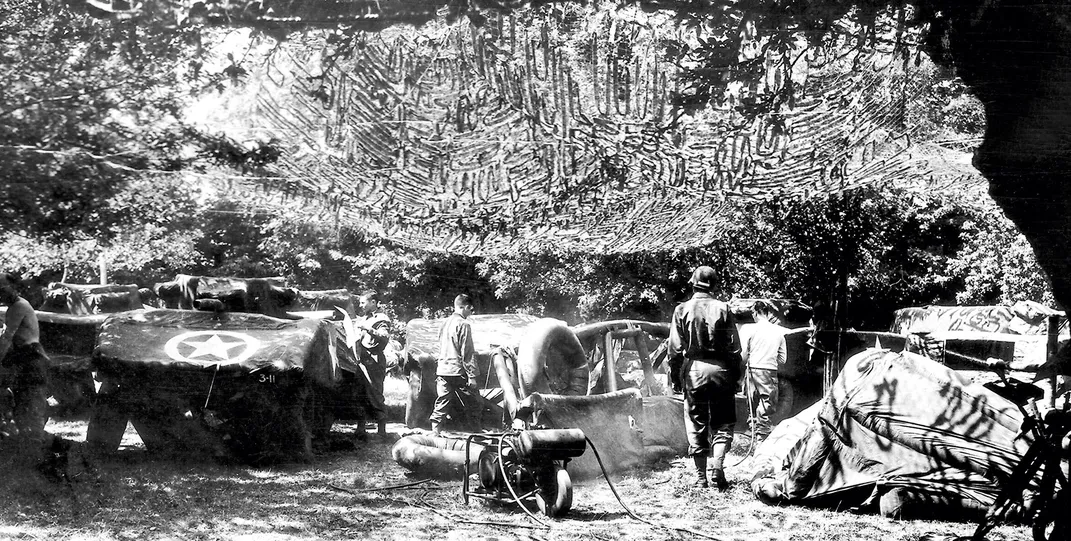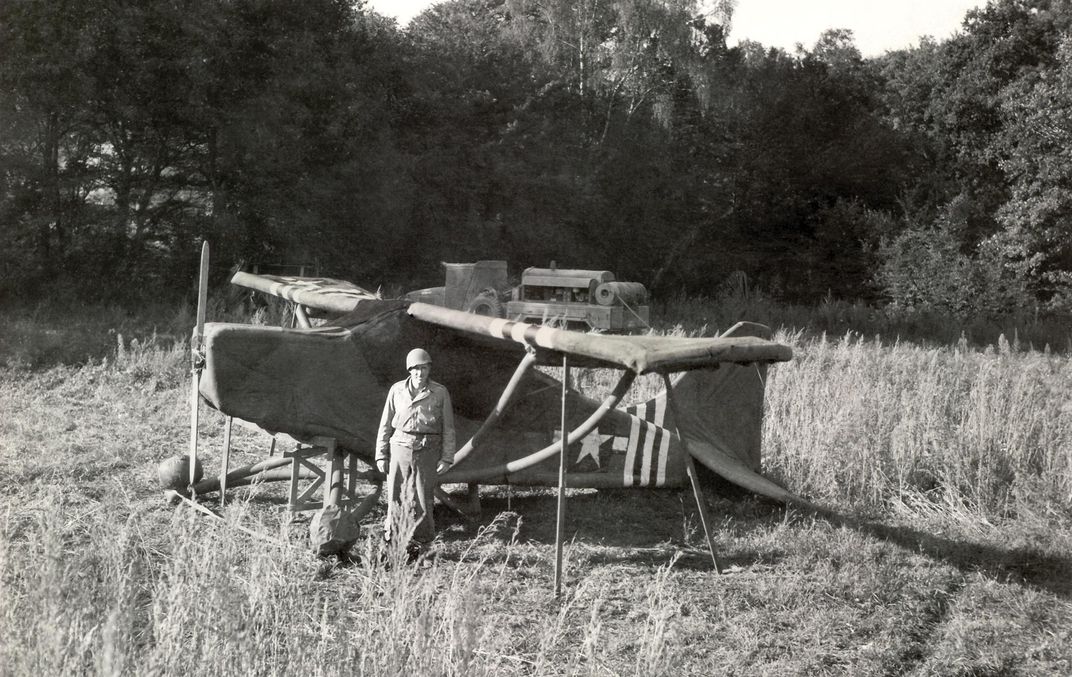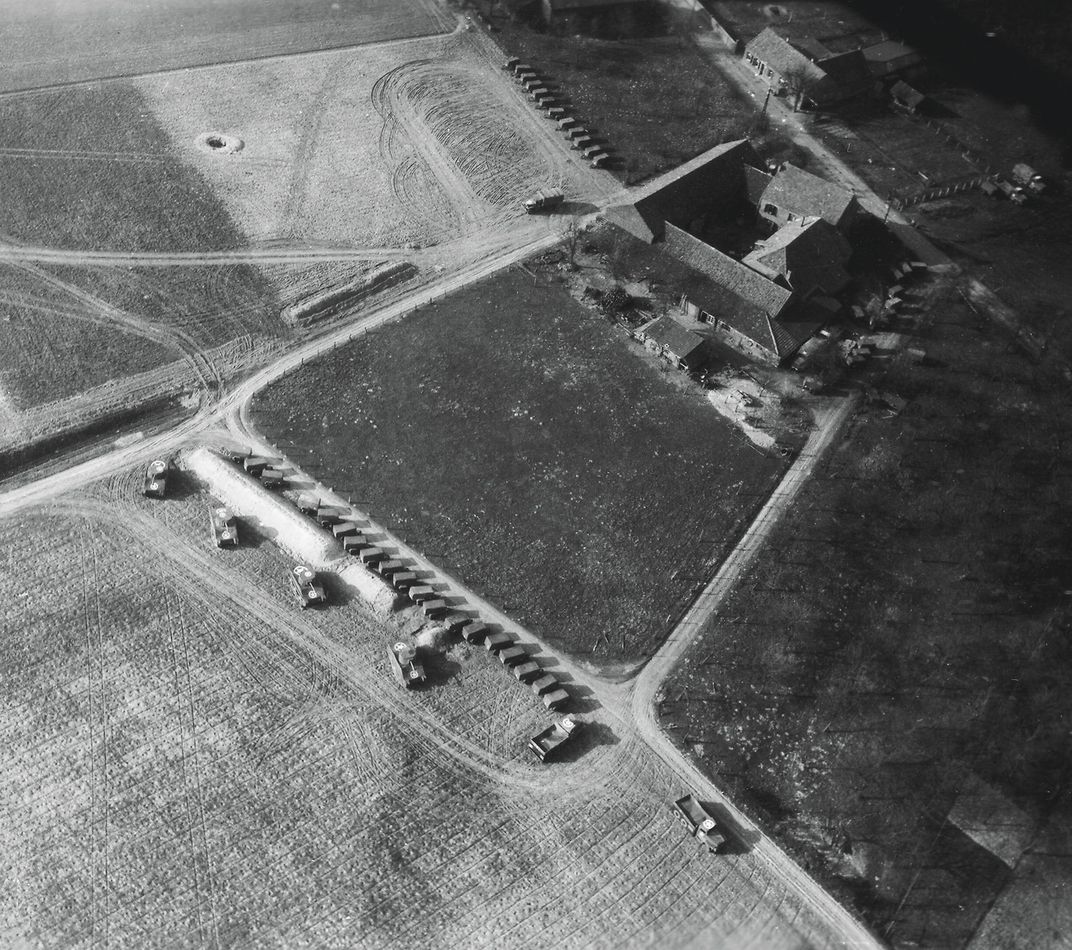The Ghost Army of World War II
In which a special unit used inflatable tanks, sound effects, and phony radio broadcasts to confuse the enemy.
/https://tf-cmsv2-smithsonianmag-media.s3.amazonaws.com/filer/82/89/8289c0a4-970e-4b65-9d09-ae69316575b7/americans_are_very_strong.jpg)
A top-secret military unit—that would become known as the Ghost Army—was formed in June 1944, just after D-Day. Made up of artists, designers, radio operators, and engineers, the unit conducted “deceptive missions” to mislead the enemy. Their story is the subject of a new book by Rick Beyer and Elizabeth Sayles titled The Ghost Army of World War II (Princeton Architectural Press, 2015).
Four separate units worked together, note Beyer and Sayles: The 603rd Engineer Camouflage Battalion Special—379 men—used inflatable rubber tanks, trucks, artillery, and Jeeps to trick enemy aerial reconnaissance observers gathering intelligence. The Signal Company Special—296 men—carried out radio deception, impersonating radio operators from real units. The 3132 Signal Service Company Special—145 men—specialized in “sonic deception,” playing sound effects to simulate the clatter of units moving and operating. The 406th Engineer Combat Company Special—168 men—provided security for the other Ghost Army units, and also helped with construction and demolition.
The unit is credited with 21 different deceptions, write the authors, and are credited with saving thousands of lives. The book—beautifully illustrated with the soldiers’ original artwork—is filled with never-before-published documents. Deadline Hollywood reported on June 16 that The Ghost Army of World War II has been optioned by Warner Bros.
Click on the gallery to see more images from the book. Images are reprinted with the permission of the publisher. The Ghost Army of World War II by Rick Beyer and Elizabeth Sayles. Published by Princeton Architectural Press, 2015.
